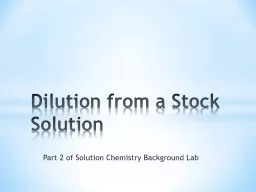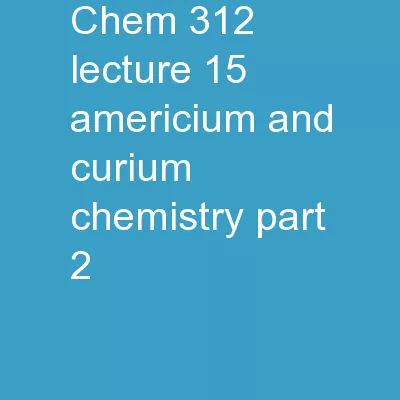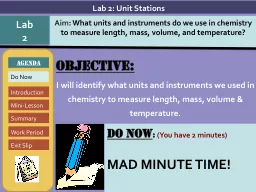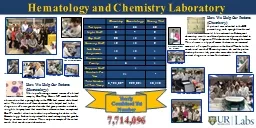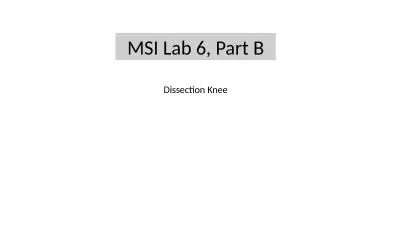PPT-Part 3 of Solution Chemistry Background Lab
Author : phoebe-click | Published Date : 2017-04-11
Dilution from a Stock Solution Review What is meant by molarity Lets look at some examples To illustrate we are going to use a concentration unit of fish in water
Presentation Embed Code
Download Presentation
Download Presentation The PPT/PDF document "Part 3 of Solution Chemistry Background ..." is the property of its rightful owner. Permission is granted to download and print the materials on this website for personal, non-commercial use only, and to display it on your personal computer provided you do not modify the materials and that you retain all copyright notices contained in the materials. By downloading content from our website, you accept the terms of this agreement.
Part 3 of Solution Chemistry Background Lab: Transcript
Download Rules Of Document
"Part 3 of Solution Chemistry Background Lab"The content belongs to its owner. You may download and print it for personal use, without modification, and keep all copyright notices. By downloading, you agree to these terms.
Related Documents

